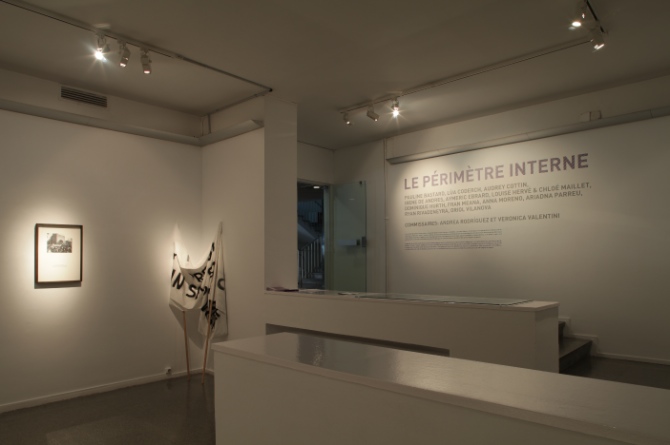Search
To search for an exact match, type the word or phrase you want in quotation marks.
A*DESK has been offering since 2002 contents about criticism and contemporary art. A*DESK has become consolidated thanks to all those who have believed in the project, all those who have followed us, debating, participating and collaborating. Many people have collaborated with A*DESK, and continue to do so. Their efforts, knowledge and belief in the project are what make it grow internationally. At A*DESK we have also generated work for over one hundred professionals in culture, from small collaborations with reviews and classes, to more prolonged and intense collaborations.
At A*DESK we believe in the need for free and universal access to culture and knowledge. We want to carry on being independent, remaining open to more ideas and opinions. If you believe in A*DESK, we need your backing to be able to continue. You can now participate in the project by supporting it. You can choose how much you want to contribute to the project.
You can decide how much you want to bring to the project.

At the moment the French Institute in Barcelona is presenting El perímetre intern (The internal perimeter), a group exhibition curated by Andrea Rodríguez Novoa and Veronica Valentini. The dozen or so works, by Spanish and French artists, presented in El perímetro interno propose a reflection on the notion of limits (geographical, historical, political, economic, social, cultural, personal…), their ambiguities and their imprecisions.
Narrating stories, highlighting examples, indicating points of confluence or carrying out small displacements are just a few of the examples employed by these artists to explore this notion. Oriol Vilanova takes a vitrine from the French Institute and deprives it of its function, simply exhibiting it open. Through the image of a wax cylinder, Dominique Hurth proposes a series of non-linear narratives. “Let hope predominate without being too visionary” is the message that Anna Moreno wrote on the placards that she showed in the world demonstration of 15 October 2011 in Barcelona and Vienna. A disturbing and undecipherable anonymous letter is the proposal by Audrey Cottin that focuses on the limits of authorship. A photograph accompanied by a Quahog shell are the elements that Aymeric Ebrard uses as a way of trying to identify what constitutes forming part of a community. Fran Meana presents an installation, with a slightly unstable equilibrium, where he compares images (and one ends up finding many common features) related to North-American Land Art and workers revolts in the dockyards of the northern Spain. Ariadna Parreu enters into the world of desires and utopias, using scientific, geometric and telekinesic references. Pauline Bastard reveals the mechanisms used to produce a romantic sunset. Ryan Rivadeneyra relates, visually and literally, his unsuccessful search for Tartessus, the mythical lost city. In their film, Pythagore et les monstres, Louise Hervé and Chloé Maillet transform the philosopher Pythagoras into the protagonist of a film with numerous traits of a B series film. Through references to a story by Lewis Carroll, Irene de Andrés constructs a perfect map, of which all that is left is the frame. The complex history of Europe now transformed into a huge tourist theme park is reflected in an installation, by Lúa Coderch, in which an electric fan artificially blows up a bag from a souvenir shop.

The internal perimeter shares approaches and concerns with another project recently presented in la Capella that we commented on a few weeks ago: La condició narrativa , curated by Alexandra Laudo. Both propose a reflection related to a specific theme and one that is relevant at the moment (one focuses on the image and the narrative condition, while the other explores the notion of limits and their imprecisions) and in this process of reflection they also evidence other things: a certain generational approximation of the artists (born in the decade of the eighties) who work with a huge diversity of materials, though often in low-tech formats; that they investigate, indicate and present facts or events from the present and the past that make it possible to reflect on the present; that they explain histories or construct situations and reveal mechanisms.
And as we’re talking about generational themes, it’s worth remembering that during the seventies, in a Barcelona still devoid of contemporary art institutions (let’s not forget that the first, the Fundació Joan Miró, was inaugurated in 1975), some of the most risky artistic proposals took place in the foreign institutes in the city. The Institut Français, the Istituto Italiano di Cultura, the Goethe-Institut and the Institute of North American Studies were just a few of the places where the works by conceptual artists were presented, as well as the encounters, discussions and seminars that reflected on the new role of art and artists.
I’m not sure if history is repeating itself, but it’s curious that just when the artistic institutions in Barcelona seem to have lost their way, some of the most interesting proposals are arising out of independent initiatives, in foreign cultural institutes, artists’ studios and non-profit spaces. And the reasons for this are not to be found solely in the cuts or the increase in VAT.

Montse Badia has never liked standing still, so she has always thought about travelling, entering into relation with other contexts, distancing herself, to be able to think more clearly about the world. The critique of art and curating have been a way of putting into practice her conviction about the need for critical thought, for idiosyncrasies and individual stances. How, if not, can we question the standardisation to which we are being subjected?
www.montsebadia.net
"A desk is a dangerous place from which to watch the world" (John Le Carré)